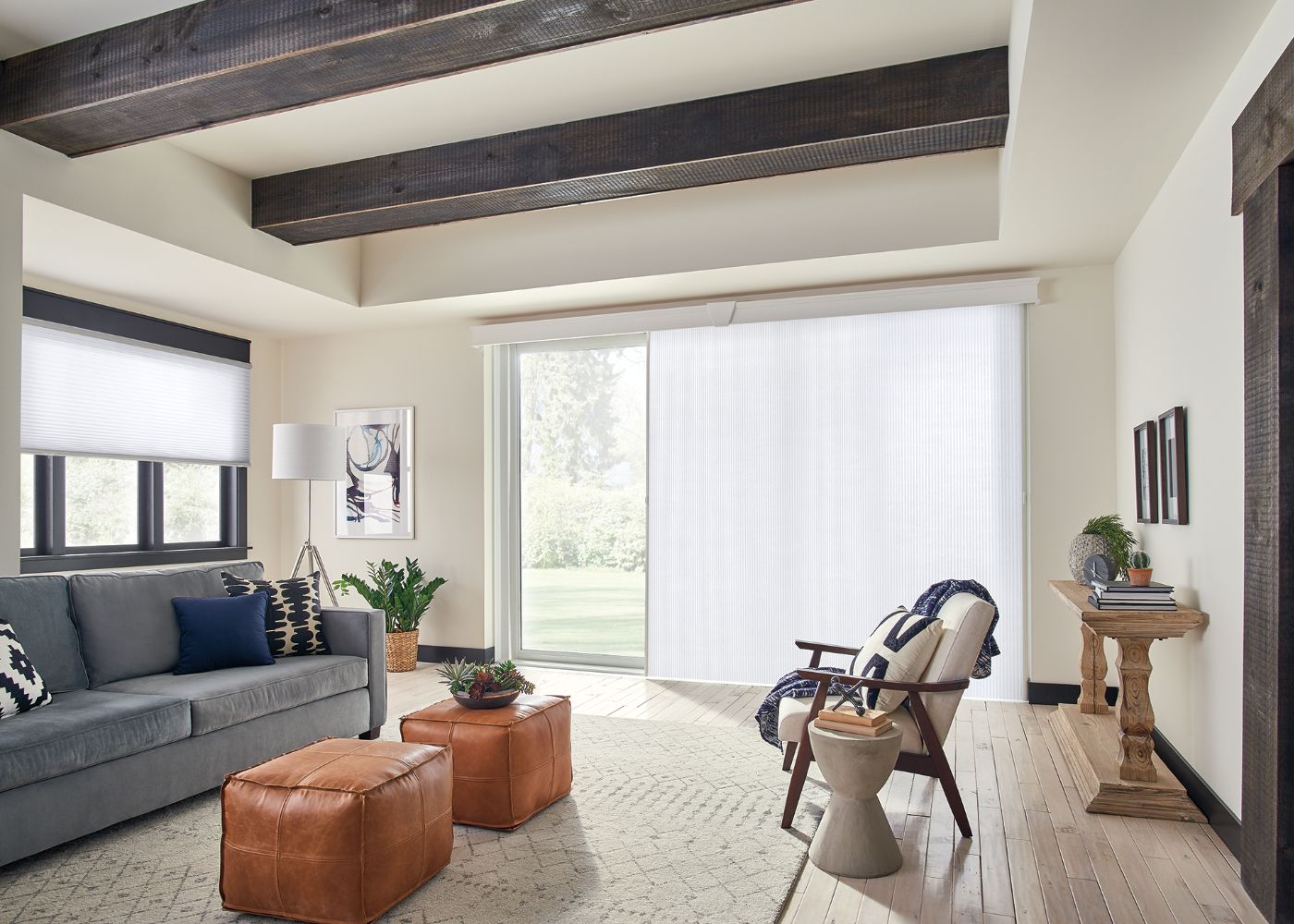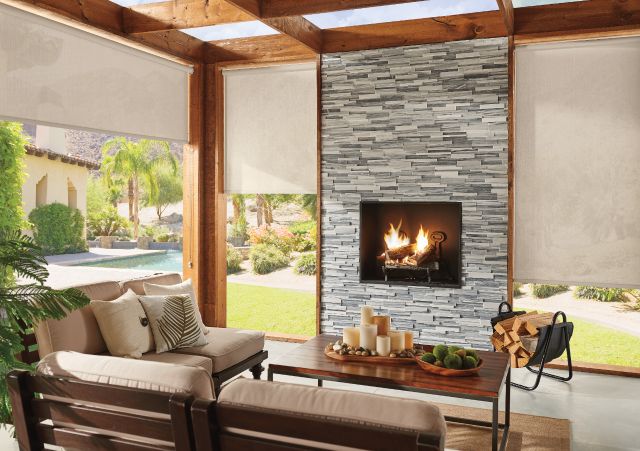
Beat the heat in summer and block the cold in winter with the right window treatments. And while it’s nice to save energy, lots of choices are both practical and pretty, so you don’t have to surrender your style!
It makes sense that having window treatments helps to insulate your home. But did you know that some treatments are better than others at keeping your home warm or cool? Sure, Roman shades and wood shutters can help block the elements. But there are other options that might better meet your insulation needs.
CELLULAR SHADES: ELEGANT ENERGY SAVINGS
The most insulating window shades are cellular shades. They have a unique honeycomb shape that traps air and helps keep your home comfortable and protected from the outside temperatures. Here are some things to keep in mind:
- Fabric is Better—Make sure your cellular shades are created with fabric. Unlike paper cellular shades, soft fabric is crush resistant and wrinkle-free. And little hands won’t accidentally poke a hole in the shade (true story!).
- Cell Size Choices—Different cell sizes, including double cells, allow you to choose the best level of insulation for your needs.
- Options for Doors—Cellular shades are also available in a vertical orientation. That means you can match your vertical cellular shades with your horizontal ones—so all your windows are insulated. And coordinated!
SOLAR SHADES: HIGH-DESIGN MEETS HIGH-PERFORMANCE
With their modern aesthetic, solar shades offer a certain cool factor. But they also allow you to manage heat, daylight, and glare for optimal indoor comfort. That’s because they utilize a unique technology that blocks the sun’s rays while allowing you to view outdoors. There are different levels of openness to keep in mind, and fabric colour plays a part in these insulating window shades as well.
What is Openness About?
Solar shade openness is what allows for view-through. Options include:
Blackout fabric: 0% openness
- Prevents light from transferring through the fabric
- View is blocked when fully lowered
Semi-opaque fabric: 1 to 3% openness
- Allows minimal light through the fabric
- View is limited
Sheer fabric: 5 to 10% openness
- Allows the daylight to filter through the fabric
- Diffused view
HERE’S A TIP
The View Goes Both Ways with Solar Shades
It’s important to remember that whatever view to the outside you have during the day, that’s the view passersby have to the inside of your lighted home at night. If privacy is desired, but you don’t want blackout solar shades, please include drapery in your design scheme.
Fabric Color and Energy Efficiency
Solar fabrics are engineered to deliver energy savings. They reduce heating/cooling
costs but they can also maximize natural light, which means less electricity is needed
for interior lighting. Color differences include:
Dark color fabrics
- Absorb more solar radiation to increase energy savings during colder months
- Reduce interior glare
- Maintain view to the outside
Light color fabrics
- Reflect more solar radiation during warmer months
- Optimize natural light by allowing more daylight through the fabric
- Provide diminished view-through in the daylight
HERE’S ANOTHER TIP
Add Drapery for Increased Insulation
Just as layers work wonders for clothing, they also add extra insulation at your windows. Not only that but drapery adds a touch of sophistication to any room. It’s a win-win. For extra protection against the beating sun, consider adding a liner to your drapes. You’ll also protect the fabric from the moisture of condensation at your windows.



